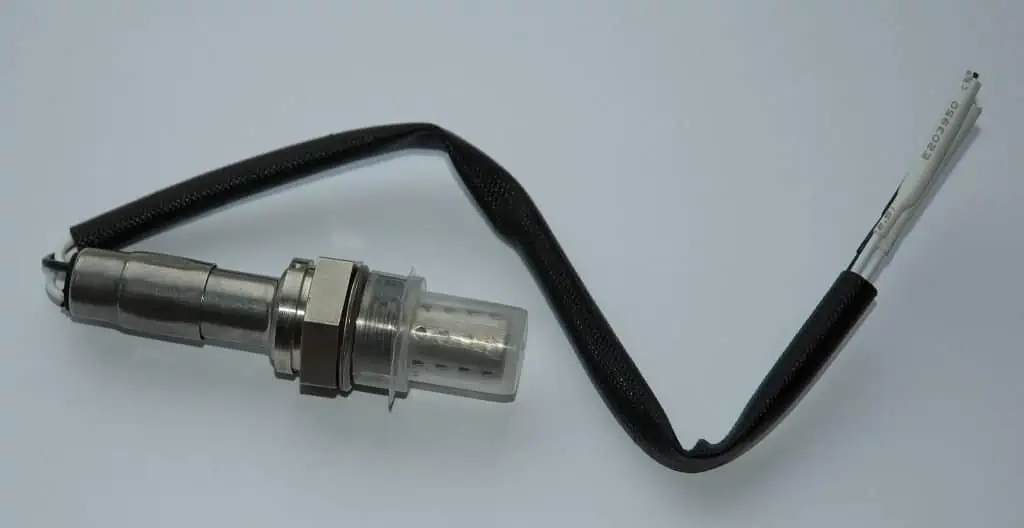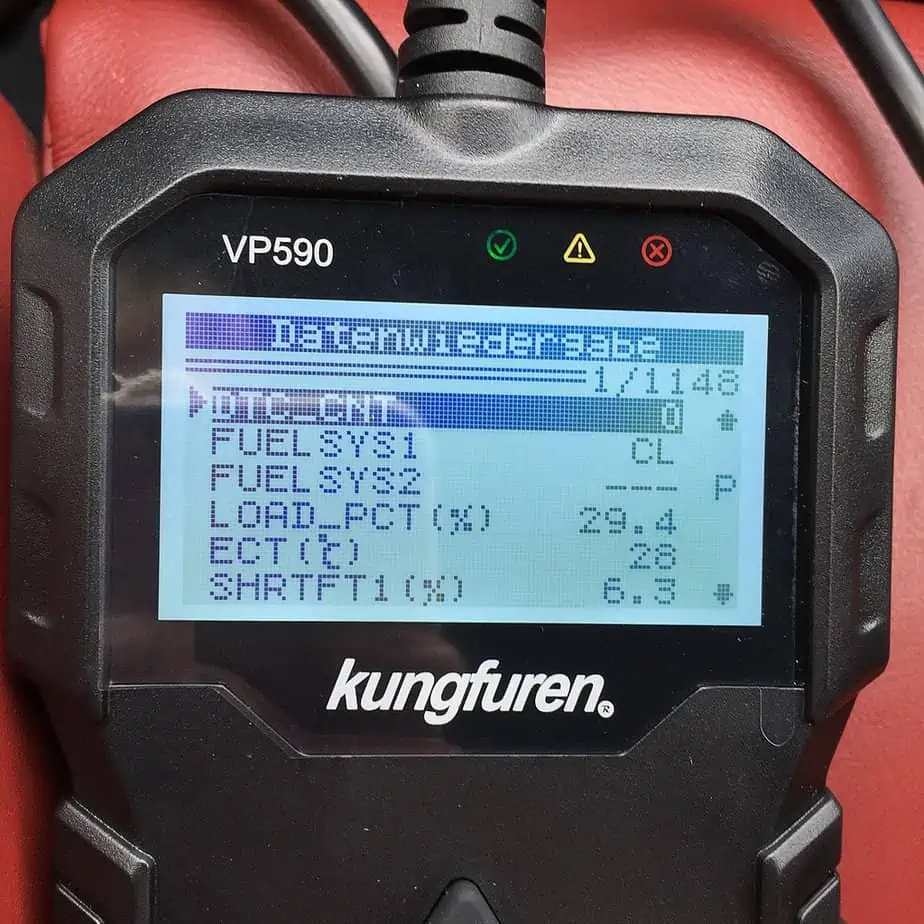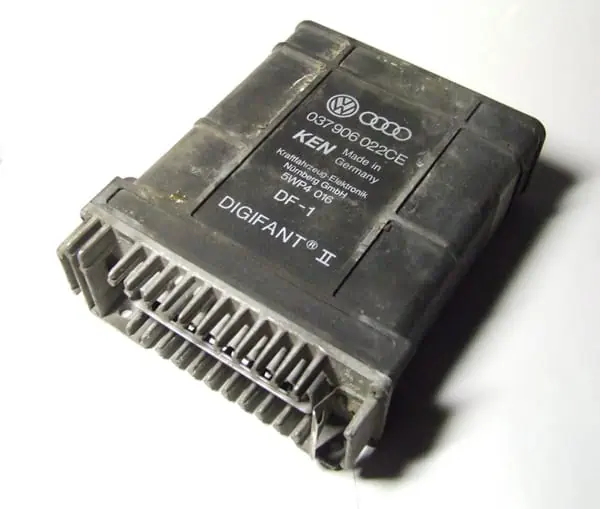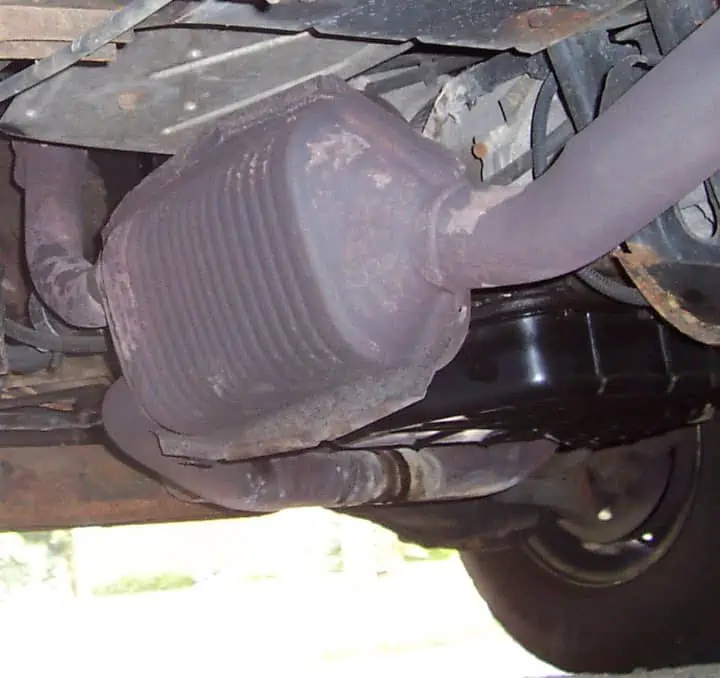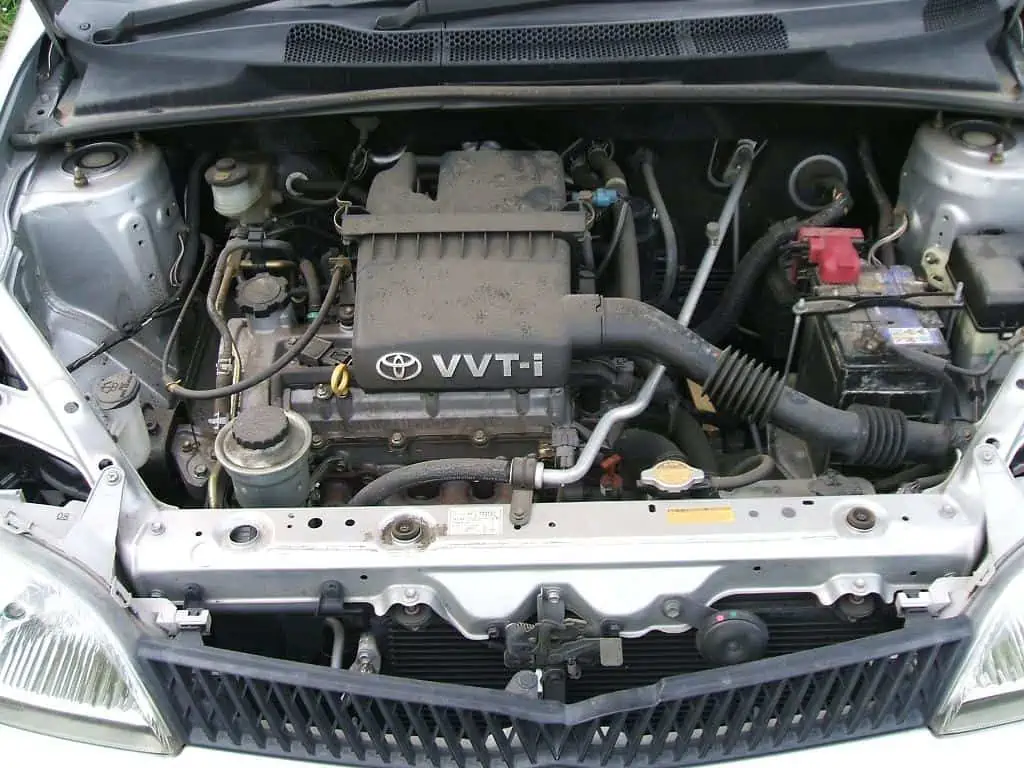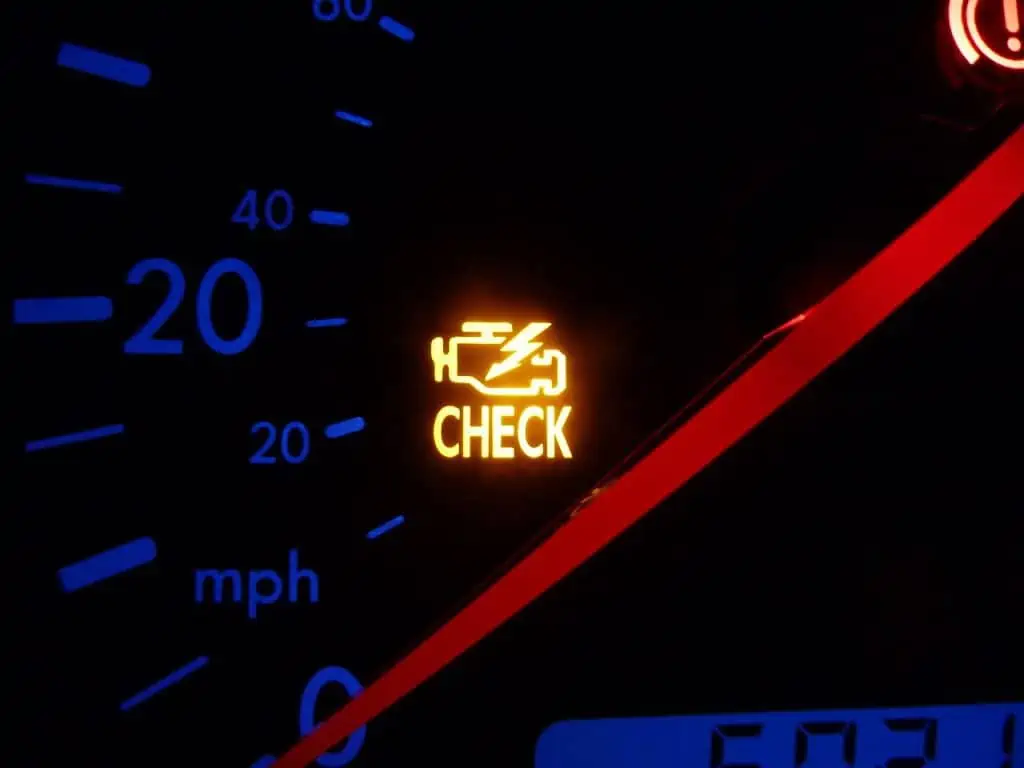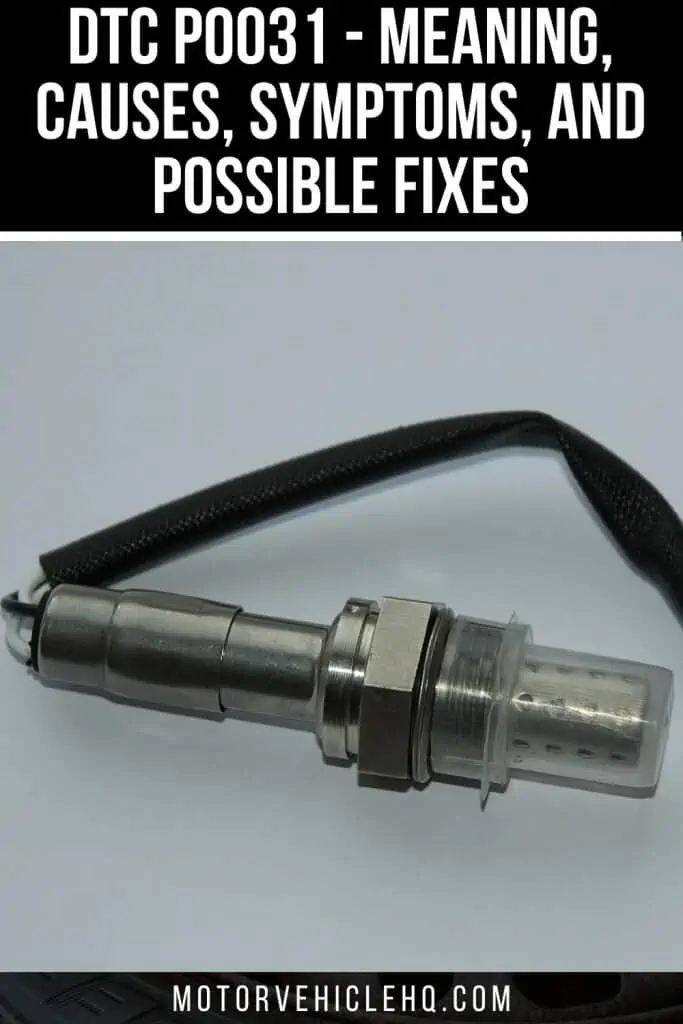Modern cars, trucks, and SUVs measure hazardous chemical output using a series of self-monitoring tests, in sharp contrast to older vehicles. This not only lowers the carbon footprint of the entire fleet but also guarantees that all current vehicles operate more effectively.
Simply put, the vehicles of today are better able to make use of every drop of fuel that they take in.
Through a variety of sensors, each of which keeps an eye on a particular aspect of the vehicle, this high-efficiency rate is achieved. Few of these sensors are as crucial to a vehicle’s operation as its oxygen sensors. These sensors transmit important data about downrange air/fuel ratios to a vehicle’s operating computer.
Unfortunately, both the circuits via which the data from an oxygen sensor travels and the oxygen sensors themselves may experience problems. A diagnostic fault code is typically saved along with the check engine light when such issues arise.
Fault P0031, which corresponds to issues with the O2 sensor heater circuit, is a typical DTC for O2 sensors. Continue reading to find out more about DTC P0031 and how to resolve similar problems in the future.
Onboard diagnostic codes, commonly referred to as automotive trouble codes, are recorded in vehicles made starting in 1996 whenever the PCM detects a systemic issue.
These fault codes assist mechanics and vehicle owners in determining the root causes of a malfunctioning vehicle and potential solutions. However, you must first comprehend the meaning of the code to correct the registered error.
P0031 is one of the ten thousand trouble codes that an OBDII scan tool can get from a vehicle. Everything you need to know about code P0031 is covered in this article.
P0031 Code: What Does It Mean?
When the engine control module ECM detects a low voltage on the heated 02 sensors, this code is registered on your car’s computer. A broken oxygen sensor or a heater element is the cause of this low voltage.
A three-wire oxygen sensor by Mnemo / CC BY-SA 3.0. The code P0031 is stored in your car’s computer when the engine control module ECM detects a low voltage on the heated 02 sensors. This low voltage is brought on by a busted heating element or an oxygen sensor.
The heater element’s purpose is to make it possible for the sensor to activate once the engine is running. The sensor measures the oxygen in the exhaust system and transmits the information to the onboard computer of the vehicle.
To control the amount of air/fuel mixture fed to the engine during the combustion cycle, the onboard computer uses the data provided by the 02 sensors. Both the sensor and the hot exhaust gas are necessary for the auto computer to heat up and produce reliable data.
While the engine is heating up, the heater element performs the calculation. The air/fuel mixture ratio is adjusted by the onboard computer after it receives data from sensor 1 to make the engine run smoothly and control pollutants.
The O2 sensor heating circuit in your vehicle (bank 1, sensor 1) is having problems, according to diagnostic error code P0031. However, to comprehend the intricacies of this code, we must first comprehend how the heater circuit of an O2 sensor function.
The O2 sensor in a car has a built-in heating element, which speeds up the process by which the O2 sensor probe reaches operational temperature. This enables the sensor in issue to give the engine management computer more succinct measurements.
The Bank 1 pre-catalytic converter O2 sensor heating circuit is displaying a general lack of resistance in the case of DTC P0031. This in turn suggests that the O2 heater isn’t working as it should.
Which are the Common Code P0031 Symptoms?
With the help of the following symptoms, you may be able to predict the error code before it manifests. They consist of:
1. Emission Tests are Consistently Failing
By controlling the air-fuel combination in a vehicle, an O2 sensor can limit the number of air pollutants discharged from the tailpipe. These sensors are essential for passing emissions testing, which is often required to finish registering a vehicle (although some states and non-U.S. locations do not require passing these tests).
While it is common for some vehicle owners to fail this checkpoint on their first attempt, failing emissions testing multiple times may already be a sign that one or more of your O2 sensors aren’t working properly.
2. Illuminated or Flashing CEL (Check Engine Light)
A faulty O2 sensor is one of the typical causes of the Check Engine Light coming on. It is an indirect cause, which means that malfunctioning O2 sensors cannot activate the CEL on their own but can cause other vehicle systems to malfunction and display the Check Engine Light.
It is preferable to utilize an OBDII Diagnostic Scanner (see on Amazon) and try to get error codes that will lead you toward the particular system or component at fault because a blazing CEL might indicate the failure of any engine part.
Examples of error codes that frequently appear in more modern vehicle models include P0136 for a malfunction in the heated oxygen sensor circuit and P0031 for a low voltage in the O2 sensor circuit. Otherwise, you will need to call your neighborhood mechanic for the proper diagnosis of this problem.
3. Rough Idling, Misfiring, or Stalling
Because it regulates the timing of the engine and the intervals between combustions, the O2 sensor ensures that the oxygen-to-fuel ratio in your car is never thrown off.
OBD2-Scanner Display by KarleHorn / CC BY 3.0. A typical DTC for O2 sensors is fault P0031, which refers to problems with the O2 sensor heating circuit. When the PCM identifies a systemic issue, onboard diagnostic codes, also known as automotive trouble codes, are stored in cars built starting in 1996.
So, it is safe to assume that you are experiencing symptoms of a malfunctioning downstream O2 sensor if you frequently experience misfiring, have rough idling, or experience any other irregularity in engine behavior along these lines.
Power loss, engine hesitancy, and stalling when the vehicle is started are other issues associated with failed oxygen sensors. Another warning indicator is when a car feels sluggish for no obvious reason.
Rough idling is generally one of the first signs of a malfunctioning O2 sensor that a driver would notice out of the three warnings discussed. Usually, misfiring comes next, and then the car will stall. The first two still allow your vehicle to start, but at a lesser level than when the engine is operating at peak efficiency.
But with stalling, misfiring incidents have either gone unchecked for too long or gotten so bad that the engine can no longer be kept running with the remaining working pistons in a car’s cylinder block.
Even now, it is difficult to determine whether the issues are being caused directly by defective O2 sensors or indirectly. The spark plugs in your car should be replaced first to assist identify the source of the issue. A fuel pressure test might help you rule out fuel hunger if you think it’s the source of your stalling or starting problems.
By doing this, you can find out if the fuel pressure regulator, the injectors, or any other parts of the fuel system are having issues. If all of these factors are in order, move forward with replacing the flawed O2 sensors.
4. Low Fuel Efficiency or Gas Mileage
In older, carbureted vehicles, in particular, fuel consumption does gradually rise over time. This gradual increase is typically brought on by worn-out engine parts. However, if it happens frequently or soon after installing new oxygen sensors, your car’s air-fuel ratio is probably either low or rich.
Usually, changing the car’s carburetor settings or, if necessary, replacing a loose vacuum hose is the next step in fixing this problem. But even for vehicles with Denso oxygen sensors, this sharp decline in fuel economy in fuel-injected, computer-controlled vehicles is a sign of a defective downstream O2 sensor and necessitates a replacement (view on Amazon).
5. Engine Performance Issues
Poor O2 sensor performance and an unbalanced air-fuel ratio lead to combustion issues, which reduce engine performance. This decrease in performance is typically followed by instances of misfiring, sporadic idling, or stalling.
Don’t let the occasional disappearance of these bad O2 sensor symptoms when your car starts to move comfort you. When left unattended, it could progress to sputtering, speed stasis, restricted acceleration or engine hesitation, power spikes, or even worse, loss of power, if it is not addressed right away. Therefore, avoiding delaying the trip to the mechanic is sorely needed.
6. Noises from the Engine
A vehicle may develop excessive amounts of carbon deposits in the combustion chambers as a result of a lack of air-fuel mixture control caused by defective oxygen sensors that are unable to perform as a proper emissions device. In turn, this leads to a lean mixture that, among other things, causes pre-ignition and engine knocking/pinging noises.
The engine control module’s ECM records the code P0031 when it notices a low voltage on the heated 02 sensors. This low voltage is brought on by a busted oxygen sensor or heating element.
This symptom is quite ambiguous and does not immediately indicate a malfunctioning O2 sensor (it usually points to a dirty carburetor or a need for top-end work). However, it will be beneficial to examine the sensors’ condition, particularly if the noises happen while the vehicle is idle.
7. Exhaust Black Smoke
Because the mechanisms designed to control air intake and fuel delivery malfunction when your O2 sensors are defective, the amounts of fuel and air in your engine become unbalanced.
In the end, this harms combustion efficiency, causing unburned fuel, backfiring, or soot-like smoke to be released from the exhaust along with high fuel consumption, poor idling, and hard starting problems.
8. Exhaust Has a Sulfuric or Rotten Egg Smell
Black smoke residue and a strong gas or sulfuric odor emanating from the exhaust are also signs of a malfunctioning O2 sensor. However, in other instances, they might be a symptom of an issue with the vehicle’s fuel system or injectors.
In any case, this distinct odor indicates that there is too much gasoline in the engine and that the car’s air-fuel ratio has to be adjusted. To be on the safe side, it is best to carry out troubleshooting procedures that address both fuel system and oxygen sensor issues; this will allow you to identify the source of the foul odor.
9. Unexpected Catalytic Converter Failure
Similar to O2 sensors, catalytic converters are a component of a vehicle’s emissions system. By switching back and forth between rich and lean mixes, they manage the amount of air in the exhaust, so lowering the number of harmful gases emitted into the atmosphere.
Although it makes up a sizable portion of a vehicle’s emissions system, its proper operation mostly depends on O2 sensors. So it follows that if O2 sensors malfunction and provide the PCM with inaccurate readings, a catalytic converter may suffer harm (perhaps to the point of complete failure).
If you experience any of the following symptoms, you may have a problem with one or more of your catalytic converters:
- Leaky valves or a faulty head gasket can cause compression misfiring.
- Either physical harm or corrosion.
- Contaminated fuel.
- Head gasket cracks cause internal coolant leaks.
- Faulty ignition brought on by a shorted or fouled spark plug.
- Due to worn valve guides, seals, rings, or cylinders, the oil may burn.
10. Overheated Engine
One of the less frequent signs of a bad O2 sensor is a persistent engine overheating problem. It is more frequently linked to issues with a car’s electrical or top-end systems.
Overheating, however, could only indicate that the car owner disregarded early warning signs of bad O2 sensors to the point where the sensors are severely worn and a replacement is long overdue. However, this situation is extremely rare.
Black smoke from the exhaust by U.S. Environmental Protection Agency. O2 sensor issues can also be detected by the presence of black smoke residue and a significant gas or sulfuric stench coming from the exhaust. In other cases, though, they can be a sign of a problem with the car’s fuel system or injectors.
Some drivers (against their better judgment) push the limits of their stock O2 sensors despite the dangers that an ignored overheated engine poses. Unfortunately, until the damaged sensors are replaced, this symptom won’t go away.
What Causes Code P0031?
- O2 sensors can be harmed by carbon buildup from the engine, filth, dirt, or any other form of material that can get into the air intake and fuel systems.
- Physical harm to the location of the O2 sensors (along the exhaust system, exhaust manifold, or catalytic converter).
- O2 sensors can become blocked and stop effectively detecting fuel supply due to low-quality gasoline, fuel impurities, or the engine burning too much oil.
- O2 sensor damage can result from skipping planned maintenance or routine replacement of spark plugs, air filters, fuel filters, and similar components, which eventually translates into combustion inefficiencies.
- Long-term use of fuel additives can negatively affect the air-fuel ratio and exhaust emissions of the vehicle.
- Using fuel with a lower or incorrect octane level than is recommended.
- Not replacing oxygen sensors according to the manufacturer’s suggested timetable.
- O2 sensors become caked or gunked as a result of poor vehicle maintenance.
- Leaving neglected early indications of faulty O2 sensors.
- Not doing a comprehensive car check at least once a year.
How Much Does the P0031 OBD2 Trouble Code Repair Cost?
The estimated cost of replacing an oxygen sensor depends on the year, make, and model of the vehicle, as well as labor costs if a qualified technician is performing the work. An oxygen sensor can cost anything from $30 to $300 brand-new.
The number of sensors that need to be replaced, the difficulty of getting to these emissions devices, and the garage or mechanic where you bring your vehicle all influence the hourly labor prices, which can range from $40 to $200.
Fortunately, changing O2 sensors is easy and costs an average of $100 for a qualified technician with the proper tools to complete. If there were no issues with the vehicle’s emissions system, these numbers would be accurate.
The price of replacing an oxygen sensor would fall toward the lower end of the repair cost range if it were not substantially damaged. However, taking into consideration other elements that are similar to O2 sensors, all owners of vehicles may have to fork over $500 to $2,500 (including parts and labor).
Code P0031: Is It Serious?
Diagnostic problem number P0031 is often not regarded as being very significant. DTC P0031 is rarely accompanied by any further symptoms, making it difficult to detect the presence of such a defect.
In the instance of DTC P0031, the Bank 1 pre-catalytic converter O2 sensor heating circuit exhibits a general lack of resistance. This in turn raises the possibility that the O2 heater isn’t operating properly.
At worst, a person could notice that their car has started to idle somewhat irregularly or that its fuel efficiency has started to decline.
The primary danger posed by DTC P0031 is the possibility of sustaining further damage as a result of over-fueling. A rich air/fuel ratio frequently coexists with DTC P0031 because the management software of the majority of engines cannot accurately calculate fuel trims without correct O2 sensor input.
As a result, extra gasoline may build up in a car’s exhaust, where it may eventually harm the catalytic converter.
In any case, the P0031 fault code on a vehicle should be identified and fixed as quickly as feasible. Make an appointment as soon as possible with a reputable automotive service facility if you do not feel confident doing such repairs yourself.
Fixing Code P0031
The procedures listed below can be used to help identify and fix the underlying cause of the P0031 diagnostic problem code in your car. As usual, before trying any such repairs, be sure to refer to a factory-specific handbook for your particular make and model of car.
1. Examine Any Additional DTCs
Verify that there are no more diagnostic issue codes before starting the diagnostic procedure. Before moving on to step 2, thoroughly diagnose any further DTCs discovered.
2. Check the O2 Sensor and Wiring Visually
Start by physically checking the wiring and the O2 sensor (bank 1, sensor 1) in your car. Make any necessary repairs if any wire lapses are found.
As well, look for symptoms of overheating or broken pins on the O2 sensor connector. All damage should be repaired as needed.
3. Check the Ground
Next, make sure there is solid ground for the impacted O2 sensor heater. The usage of a digital multimeter can be used to do this. Find the cause of any “open” in the ground circuit if continuity to the ground is not found, and then fix it.
4. Check for Appropriate Power Delivery
Check for correct power delivery to the associated sensor heater circuit after confirming the afflicted O2 sensor’s ground. The same digital multimeter indicated in step 3 may be used for this.
The heater circuit supply voltage should be at, or close to, 12 volts while the car’s key is in the “On” position. Further analysis of the damaged circuit would be required to identify any potential wiring issues if there was a shortage of power supply.
All circuit fuses should also have their continuity verified. The vehicle’s PCM/ECM would be in doubt if there were no wiring problems on this specific circuit.
5. Check the Resistance If Necessary
A resistance test of the O2 sensor circuit will likely be required if the voltage was present but lower than predicted during the testing described in step #4.
A car engine may often overheat by Carolla / CC BY-SA 3.0. Overheating of the engine might only mean that the owner of the vehicle ignored early warning indications of faulty O2 sensors to the point where the sensors are severely worn and need to be replaced. This circumstance, though, is quite uncommon.
For information on the minimum and maximum criteria for this testing, one should check the manufacturer’s service manual for their particular vehicle.
6. Changing a Faulty O2 Sensor
The O2 sensor in your car (bank 1, sensor 1) will need to be replaced if testing has shown that it is getting both positive and ground signals. The circuit resistance will also need to be within specifications.
What Fixes are Available for the P0031 Code?
The following are the most typical potential fixes for the P0031 error code:
- Have a qualified technician use a scanner to confirm the code. Perform a road test after clearing the trouble codes.
- Follow the test method if the P0031 code appears. It may have several issues, but the most frequent one is electrical damage from the exhaust’s extreme heat. Before replacing the sensor, make sure the wiring is sound and that the sensor is receiving the right voltage as well as the ground.
- Use a voltmeter to verify for 12+ volts fused battery supply to the heating element when the key is turned on and the engine is off. If there is no voltage, check to see if any blown fuses from the short need to be replaced before repairing the open or short in the 12-volt feed circuit.
- Remove the ground (control) circuit from the ECM wire connection and test the circuit for resistance if the battery feed is sound.
- If the resistance is infinite, the circuit has to be repaired.
- Consider a defective O2 sensor if the control circuit seems good. Recheck after changing the sensor.
My Experience as an Example
Due to the extremely constrained space in a Mercedes CLK, I became frustrated trying to diagnose a P0031 code and changed the very expensive HO2 #1 sensor.
However, after a test drive, the engine warning light turned back on, and I got the same code once again. After visually inspecting the wiring to verify sure it was unharmed or melted, I discovered that the sensor had less than 10 volts.
At first, all I did was use a 12-volt test light, and when it lit up, I assumed that the circuit was complete. Further research revealed that the HO2 sensor circuit’s ground wire was severely corroded and that the nut holding it to the chassis was loose.
When I examined it again after cleaning it out and adding another washer to enhance the contact area, I saw 12.5 volts. The vehicle was OK after the code had been cleared with the OBD-II scanner.
Common Errors Made In Code P0031 Diagnosis
Even if the mechanic or auto specialist replaces the O2 sensors, the error code P0031 issue can still exist. It is advisable to inspect all of the 02 sensors’ wiring and circuit fittings. The mechanic should also make sure that the sensor and the ground are receiving 12 volts. It is crucial to verify that the connections are installed and functional.
Additional Comments Relating to the P0031 Code for Consideration
Momentary sensor issues, which often happen during start-up or sustained stress situations on the drive train, are common in cars with more than 100,000 miles on them.
The check engine light by Wikiuser100000 / CC BY-SA 3.0. One of the common reasons for the Check Engine Light to illuminate is an issue with the O2 sensor. It is an indirect cause, therefore faulty O2 sensors cannot turn on the Check Engine Light on their own, but they can lead to other car systems breaking down and illuminating the Check Engine Light.
The OBD-II system can be reset using the scanner if the engine warning light illuminates and the car appears to be functioning OK. This may prevent the issue from recurring. For this reason, it’s crucial to confirm the problem and reset it before making any repairs.
Can the P0031 Code Allow Me to Drive My Car?
Code P0031 won’t keep you off the road, but you shouldn’t let the problem persist since it can lead to poor engine performance, excessive fuel consumption, and sensor loop failure, and it can also affect other system parts.
Is P0031 a Bad Code?
The fact that code P0031 cannot stop a vehicle from moving is not a negative thing. The most frequent effects are poor fuel economy and irregular idling. If it is not rectified right away, though, it might seriously harm connected components.
H02S: What Is It?
In chemistry, H02 can be referred to as water, among other things. H02S, however, stands for Heater Control Circuit Sensor in the vehicle sector. In addition, it refers to a heated oxygen sensor.
What Does the H02S Heater Control Circuit Low Consist of?
A heater circuit of a 02 sensor that is poor or inoperable is referred to as having a low heater control circuit. The oxygen sensor’s heating circuit, also referred to as the heater element, is a crucial component that raises the sensor’s operational temperature until the engine heats up.
Bank 1 Sensor 1: Is It on the Right or the Left?
There are several automakers, and each has a unique approach to engine design. Why do I say that? Bank 1 may be on the right engine side in certain vehicles, while it may be on the left in others.
The side of the engine with the No. 1 cylinder is normally where Bank 1 Sensor No. 1 is positioned. However, each bank has two oxygen sensors attached to it, making a total of four sensors.
Assume your number one engine is on the left side of the vehicle. Nevertheless, bank 1 sensor 1 is the 02 sensor, and it is situated upstream of the exhaust [before the catalytic converter]. The second sensor in Bank 1 is the one placed downstream [of the catalytic converter]. For bank 2 sensors, the same holds.
The Conclusion
The performance of the engine will be improved and the vehicle will operate more smoothly without the P0031 code logging on with timely engine tune-up and maintenance.
P0031 can indeed create several system flaws, however, routine maintenance can reduce system component damage.
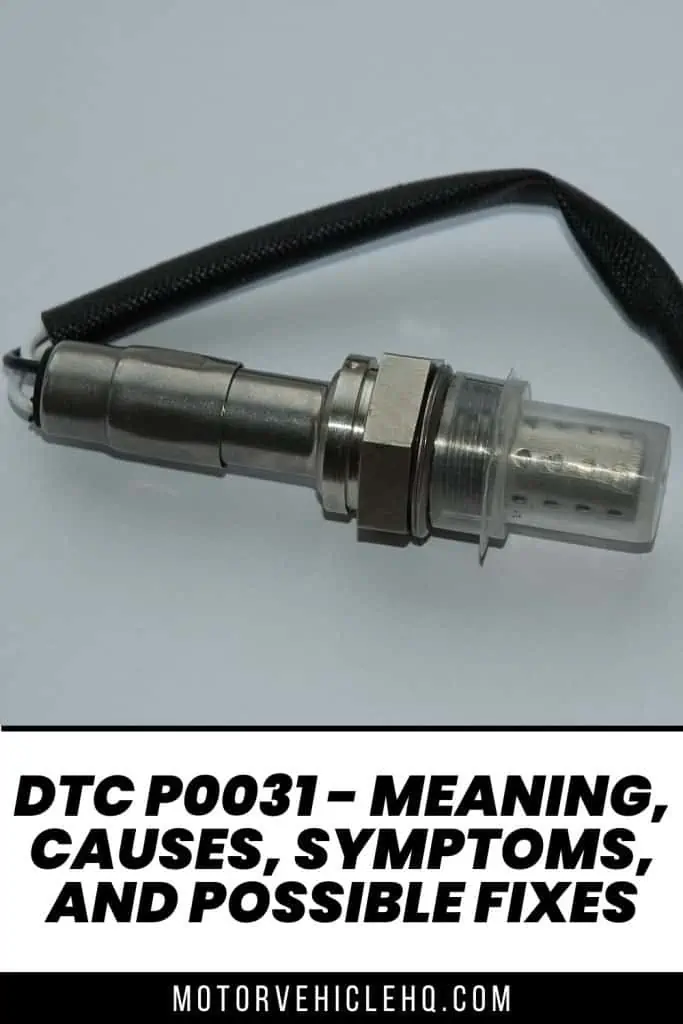
A three-wire oxygen sensor by Mnemo / CC BY-SA 3.0

Jim Wicks is the founder of MotorVehicleHQ. With over two decades of experience in the automotive industry and a degree in Automotive Technology, Jim is a certified car expert who has worked in various roles ranging from a mechanic, car dealership manager, to a racing car driver. He has owned more than 20 cars over the past 15 years. Ask him about any vehicle you see on the road and he can tell you the make, model and year. He loves the aesthetics of all things cars, and keeps his vehicles in pristine condition.
In his free time, Jim enjoys getting his hands dirty under the hood of a classic car or taking long drives along the country roads. His favorite car? A 1967 Shelby GT500, a true classic that, according to Jim, “represents the pure essence of American muscle.”
